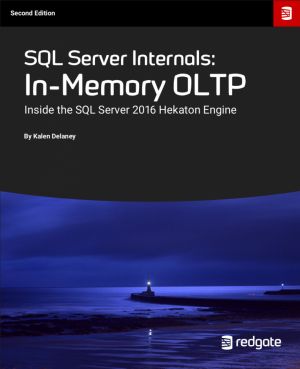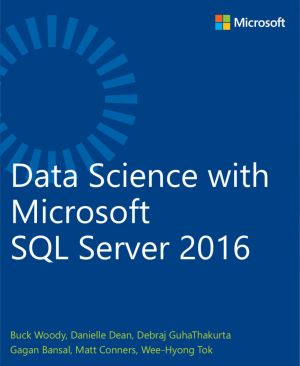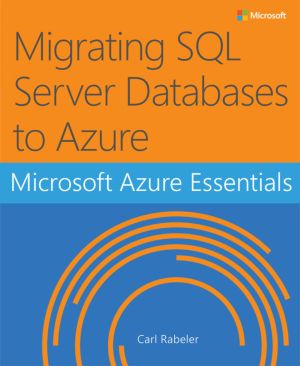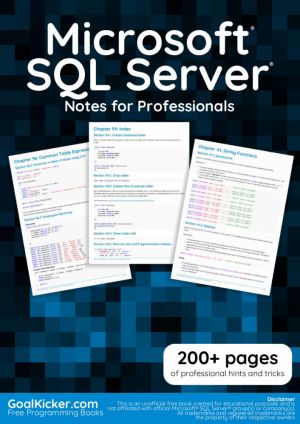SQL Server Execution Plans, 3rd Edition
For SQL Server 2008 through to 2017 and Azure SQL Database
by Grant Fritchey
DescriptionTable of ContentsDetailsHashtagsReport an issue
Every day, out in the various online forums devoted to SQL Server, and on Twitter, the same types of questions come up repeatedly: Why is this query running slowly? Why is SQL Server ignoring my index? Why does this query run quickly sometimes and slowly at others? My response is the same in each case: have you looked at the execution plan?
An execution plan describes what's going on behind the scenes when SQL Server executes a query. It shows how the query optimizer joined the data from the various tables defined in the query, which indexes it used, if any, how it performed any aggregations or sorting, and much more. It also estimates the cost of all of these operations, in terms of the relative load placed on the system.
Every Database Administrator, developer, report writer, and anyone else who writes T-SQL to access SQL Server data, must understand how to read and interpret execution plans. My book leads you right from the basics of capturing plans, through how to interrupt them in their various forms, graphical or XML, and then how to use the information you find there to diagnose the most common causes of poor query performance, and so optimize your SQL queries, and improve your indexing strategy. 




Book Description
Every Database Administrator, developer, report writer, and anyone else who writes T-SQL to access SQL Server data, must understand how to read and interpret execution plans. My book leads you right from the basics of capturing plans, through how to interrupt them in their various forms, graphical or XML, and then how to use the information you find there to diagnose the most common causes of poor query performance, and so optimize your SQL queries, and improve your indexing strategy. You'll also learn how to take advantage of the Query Store and the latest optimizations, Adaptive Query Processing.Every day, out in the various online forums devoted to SQL Server, and on Twitter, the same types of questions come up repeatedly: Why is this query running slowly? Why is SQL Server ignoring my index? Why does this query run quickly sometimes and slowly at others? My response is the same in each case: have you looked at the execution plan?
An execution plan describes what's going on behind the scenes when SQL Server executes a query. It shows how the query optimizer joined the data from the various tables defined in the query, which indexes it used, if any, how it performed any aggregations or sorting, and much more. It also estimates the cost of all of these operations, in terms of the relative load placed on the system.
Every Database Administrator, developer, report writer, and anyone else who writes T-SQL to access SQL Server data, must understand how to read and interpret execution plans. My book leads you right from the basics of capturing plans, through how to interrupt them in their various forms, graphical or XML, and then how to use the information you find there to diagnose the most common causes of poor query performance, and so optimize your SQL queries, and improve your indexing strategy.
This open book is licensed strictly for personal or educational use. You can download SQL Server Execution Plans, 3rd Edition ebook for free in PDF format (67.9 MB).
Table of Contents
Chapter 1
Introducing the Execution Plan
Chapter 2
Getting Started Reading Plans
Chapter 3
Data Reading Operators
Chapter 4
Joining Data
Chapter 5
Sorting and Aggregating Data
Chapter 6
Execution Plans for Data Modifications
Chapter 7
Execution Plans for Common T-SQL Statements
Chapter 8
Examining Index Usage
Chapter 9
Exploring Plan Reuse
Chapter 10
Controlling Execution Plans with Hints
Chapter 11
Parallelism in Execution Plans
Chapter 12
Batch Mode Processing
Chapter 13
The XML of Execution Plans
Chapter 14
Plans for Special Data Types and Cursors
Chapter 15
Automating Plan Capture
Chapter 16
The Query Store
Chapter 17
SSMS Tools for Exploring Execution Plans
Book Details
Title
SQL Server Execution Plans, 3rd Edition
Subject
Computer Science
Publisher
Red Gate
Published
2018
Pages
515
Edition
1
Language
English
ISBN13 Digital
9781910035221
ISBN10 Digital
191003522X
PDF Size
67.9 MB
License
For personal or educational use
Related Books

The SQL Server 2016 In-Memory OLTP engine (a.k.a. Hekaton) is designed to exploit terabytes of available memory and high numbers of processing cores. It allows us to work with memory-optimized tables and indexes, and natively compiled stored procedures, in addition to the disk-based tables and indexes, and T-SQL stored procedures, that SQL Server h...

SQL Server Hardware will provide the fundamental knowledge and resources you need to make intelligent decisions about choice, and optimal installation and configuration, of SQL Server hardware, operating system and the SQL Server RDBMS.
Relational databases place heavy demands on their underlying hardware and many of these databases are mission-...

Resilient T-SQL code is code that is designed to last, and to be safely reused by others. The goal of defensive database programming, the goal of this book, is to help you to produce resilient T-SQL code that robustly and gracefully handles cases of unintended use, and is resilient to common changes to the database environment.
Too often as deve...

R is one of the most popular, powerful data analytics languages and environments in use by data scientists. Actionable business data is often stored in Relational Database Management Systems (RDBMS), and one of the most widely used RDBMS is Microsoft SQL Server. Much more than a database server, it's a rich ecostructure with advanced analytic ...

SQL Server is Microsoft's relational database management system (RDBMS). SQL Server can now be hosted entirely in Microsoft Azure, either in a hosted virtual machine (VM) or as a hosted service. Hosting a virtual machine in Azure is known as infrastructure as a service (IaaS), and hosting a service in Azure is known as platform as a service (P...


